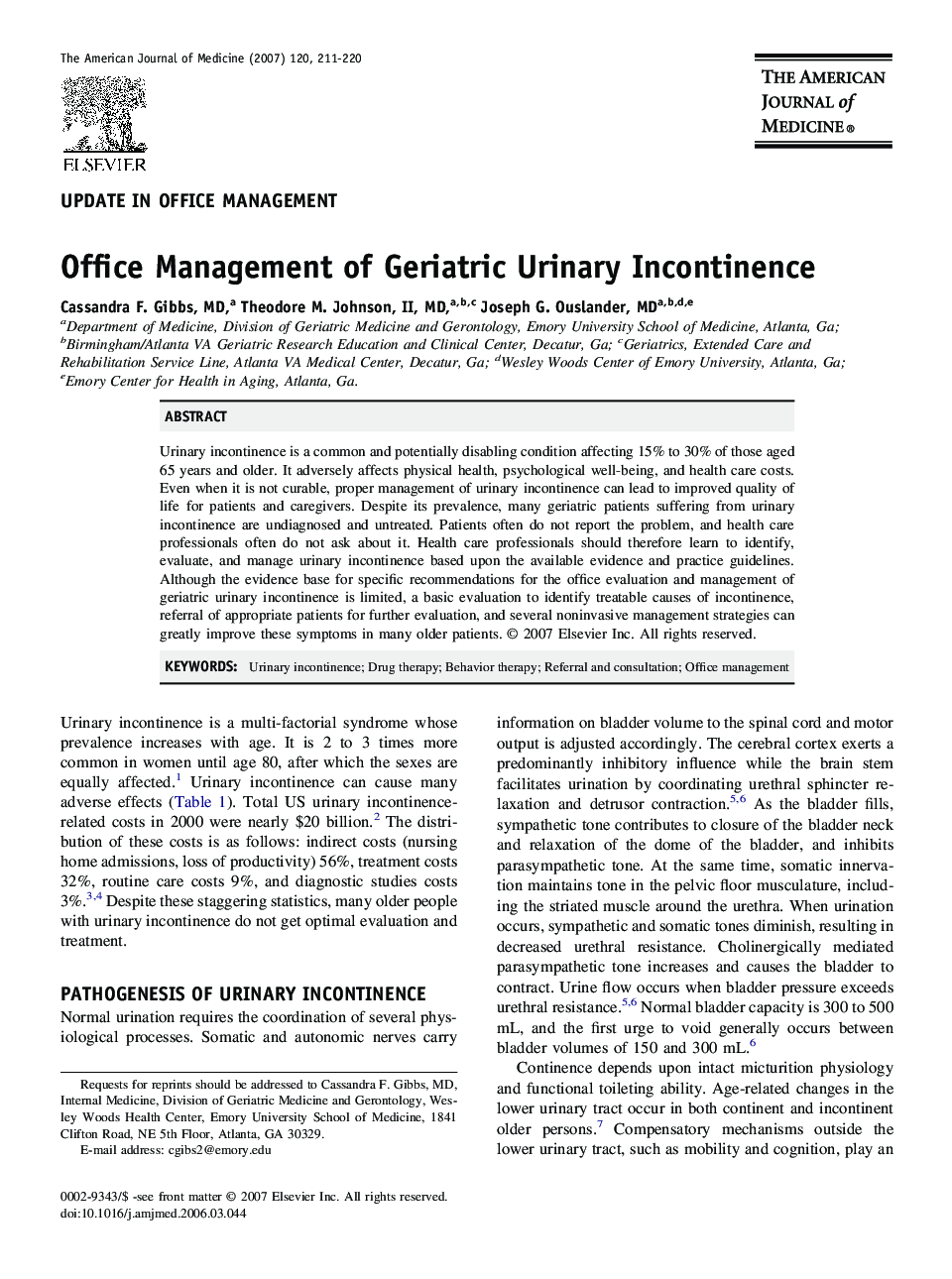| Article ID | Journal | Published Year | Pages | File Type |
|---|---|---|---|---|
| 2720716 | The American Journal of Medicine | 2007 | 10 Pages |
Urinary incontinence is a common and potentially disabling condition affecting 15% to 30% of those aged 65 years and older. It adversely affects physical health, psychological well-being, and health care costs. Even when it is not curable, proper management of urinary incontinence can lead to improved quality of life for patients and caregivers. Despite its prevalence, many geriatric patients suffering from urinary incontinence are undiagnosed and untreated. Patients often do not report the problem, and health care professionals often do not ask about it. Health care professionals should therefore learn to identify, evaluate, and manage urinary incontinence based upon the available evidence and practice guidelines. Although the evidence base for specific recommendations for the office evaluation and management of geriatric urinary incontinence is limited, a basic evaluation to identify treatable causes of incontinence, referral of appropriate patients for further evaluation, and several noninvasive management strategies can greatly improve these symptoms in many older patients.
